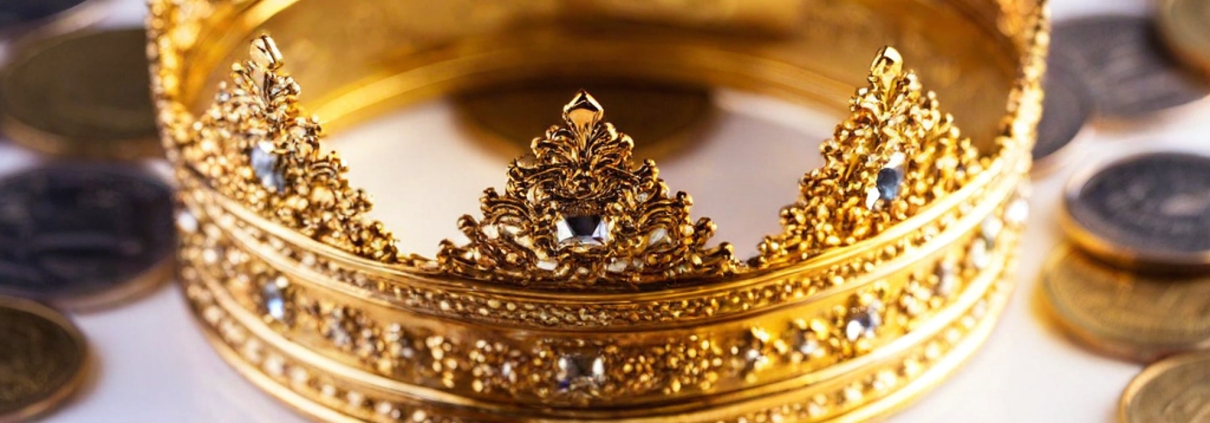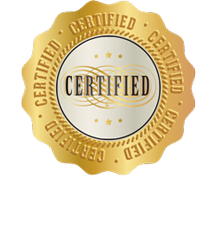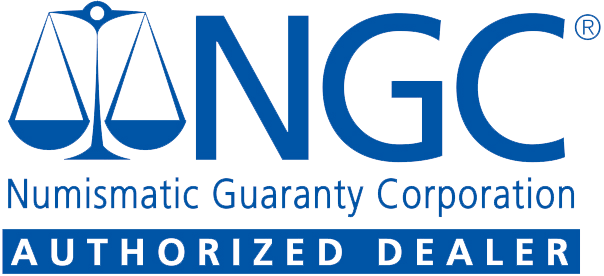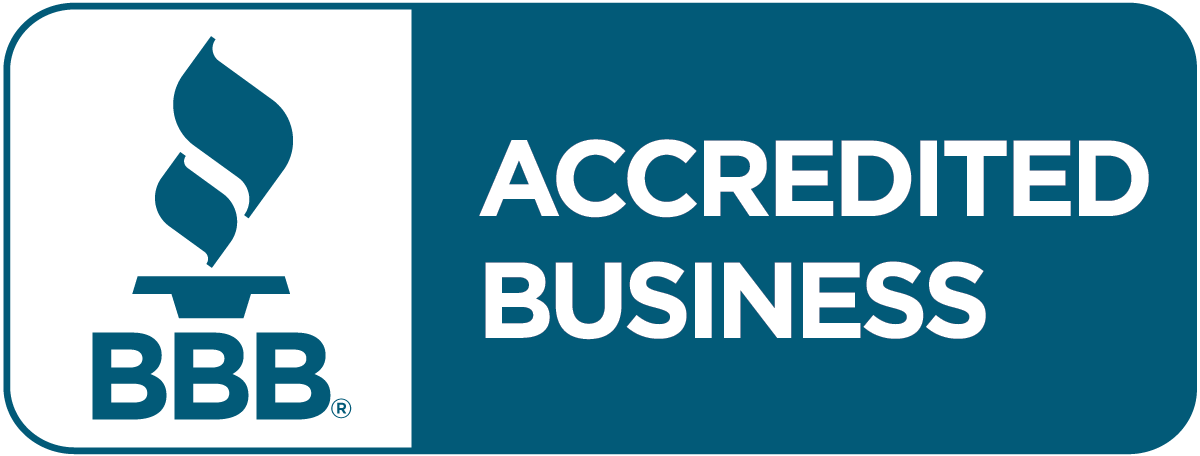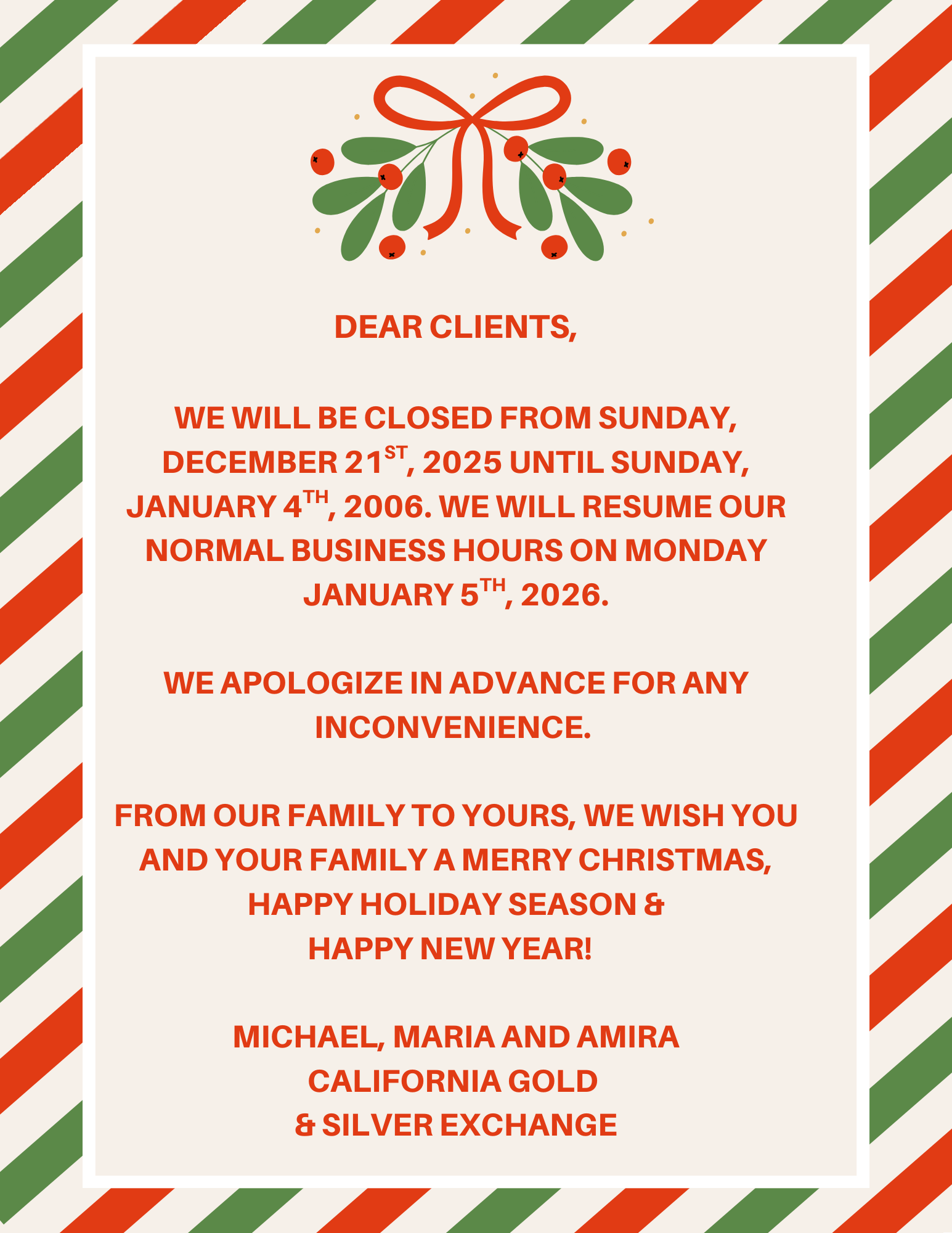We have received your message. If you indicated that you would like to make an appointment, we will reach out to you shortly.
When you sell gold to us, we will explain every step of the process to help you understand how selling gold works. With your XRF Precious metals Analyzer, we can test your gold to know exactly what purity your gold contains. This helps us assess your gold to give you the most when you sell.
Gold has been a symbol of wealth and security for centuries, attracting investors looking for stability amidst uncertain economic conditions. Among gold options, crown gold holds a special, historical significance. For anyone in California considering investing in precious metals, understanding crown gold and its potential benefits is crucial.
This comprehensive guide will introduce you to crown gold, explain its benefits as an investment, and demystify how trading crown gold works. Whether you’re new to gold investing or a seasoned investor looking to expand your portfolio, this post has everything you need to make well-informed decisions.
What is Crown Gold?
Crown gold refers to a 22-karat gold alloy, which means it contains 22 parts pure gold and 2 parts other metals, such as copper or silver. This specific blend makes crown gold less prone to wear and tear compared to higher-purity gold like 24-karat.
The term “crown gold” originated in England in 1526 during the rule of King Henry VIII and was initially used to describe the gold used in crown coins. Today, it’s recognized as one of the purest yet practical forms of gold for manufacturing coins, bars, and other valuable items.
Why Choose Crown Gold?
- Durability: The alloy’s composition makes it tougher and more resistant to damage than purer gold options.
- Value Retention: Crown gold retains its intrinsic value due to its high gold content. It’s a preferred option for investors who want a balance between purity and longevity.
- Historical Legacy: Its long-standing association with coins and premium gold products adds an element of prestige to ownership.
Investing in Crown Gold
When considering investments in precious metals, crown gold stands out for its accessibility and versatility. Here’s how crown gold can benefit investors:
1. Portfolio Diversification
Gold acts as a hedge against inflation and provides stability during market downturns. Investing in crown gold diversifies your portfolio and reduces overall risk.
2. Variety of Investment Options
Crown gold is available in multiple forms, including coins, bars, and bullion. This versatility makes it easier to select investment options based on your budget and goals.
3. High Liquidity
Many crown gold items, especially popular coins and bars, are recognized globally, ensuring high liquidity. This means you can easily trade or sell your assets when needed.
4. Tangible Asset
Unlike stocks or digital currencies, crown gold is a physical asset you can hold, adding a layer of security to your investments.
Before making any investment, it’s important to consult with your CPA or financial advisor to ensure it aligns with your financial goals.
Crown Gold: What Investors Need to Know
To make the most of crown gold investments, you’ll want to keep a few key points in mind when buying or selling.
The Best Types of Gold to Exchange
- Gold Bars are ideal for investors looking for flexibility and high-value returns. They are available in various weights and purities, allowing you to customize your investment.
- Gold Coins hold both intrinsic and collectible value. They are sought-after by collectors and investors alike.
Evaluate Purity Levels
While crown gold is 22-karat, other forms of gold may vary in purity. Opting for higher-purity gold can sometimes offer better returns, though it may not have the same durability as crown gold.
Common Crown Gold Coins
Some of the most popular crown gold coins include:
- American Gold Eagle
- Canadian Maple Leaf
- South African Krugerrand
- British Gold Sovereign
- Mexican Gold Peso
These coins are widely recognized and easy to trade or sell, making them a staple in any investor’s portfolio.
Trusted Dealers
When investing in crown gold, it’s crucial to work with reputable dealers. They can provide certificates of authenticity and ensure fair pricing based on current market rates.
Understanding Crown Gold Exchanges
The process of exchanging crown gold involves trading your assets, such as coins, jewelry, or bars, for cash or other precious metals. At reputable exchanges, such as CA Gold and Silver, this process is straightforward and dependable.
Here’s a breakdown of how gold exchanges work:
- Evaluation
Your gold items will be professionally evaluated for weight, purity, and market demand.
- Offer
Based on evaluation, you’ll receive an offer for your gold.
- Trade or Sell
You can choose to sell for cash or trade for other gold assets.
Gold Items Commonly Exchanged
At gold exchanges, you can trade various forms of crown gold, including:
- Broken or unused jewelry
- Bullion and bars
- Dental gold
- Popular gold coins (such as the ones mentioned earlier)
Always verify the credibility of the exchange and ask for transparent pricing before proceeding.
Wrapping Up
Crown gold offers a reliable and versatile investment opportunity, combining durability, historic significance, and intrinsic value. Whether you’re diversifying your portfolio, securing wealth against market volatility, or simply adding tangible assets to your holdings, crown gold is an excellent choice for investors.
If you’re ready to explore the world of crown gold, consider partnering with trusted experts like CA Gold and Silver Exchange. With a wide range of gold assets and professional support, they make it easy for investors to buy, sell, or exchange crown gold confidently.
Start your gold investment journey today. Contact CA Gold and Silver to learn more about trading crown gold and securing your financial future.
It’s official: People are very driving long distances to sell their gold at California Gold & Silver Exchange. Why? It all comes down to trust, but we’ve thought of some more reasons to make the drive! The main reasons are obvious:
- We give you the best price
- We give you a free estimate with no obligation, should you wish to try to get a better price elsewhere.
- We pay in cash, today
- We have hundreds and hundreds of 5-Star reviews
- We have been open for business decades longer than most other businesses in the region
It seems our reputation for providing great service and giving a fair deal when you buy and sell your gold and silver is the major factor people are driving to our store from all over Los Angeles, sometimes even hundreds of miles!
But we think there are a few more great reasons to make the trip, and make a day out it. We thought we’d share three more reasons to make the trip.
1. Get Out of The LA Traffic
When you make the drive to Upland, you’re generally going on the other side of the freeway as everyone else. They’re stuck in a traffic jam, while you’re driving in freedom! Plus, unlike LA, there is plenty of parking in Upland and it’s all free.
2. It’s Worth The Drive
Driving up through Orange County, or along the Pasadena Foothills off the 210, you’re in for some scenic vistas.
3. Enjoy The Local Flavor
Since you’re going to be cashing in on your gold and silver, perhaps you might want to indulge in some of the sights nearby. There are also some museums nearby, including the weirdly fun Bunny Museum. You can also take in a hike at Mt. Baldy Lodge, the Arroyo or the Sam Merrill trail to echo mountain.

The Huntington Library, art museum, and botanical gardens is a very popular attraction.
For more great ideas, check out this reddit post to see lots of recommendations on shopping and dining in the area.
Do you have more ideas? Be sure to let us know how you’re making the most of your trip when you come in, we’d love to hear about your adventure!
Taiwanese gold stands out as a gem in the world of precious metals, combining high purity, exceptional craftsmanship, and cultural richness. Whether you’re an investor seeking stable returns or someone fascinated with gold’s global diversity, understanding Taiwanese gold can open new opportunities. Let’s explore its characteristics, market value, and how it compares to other gold around the world.
What is Taiwanese Gold?
Taiwanese gold refers to gold items like jewelry, bars, and coins that are crafted and valued in Taiwan. Known for a heritage of fine craftsmanship, this gold offers a mix of traditional and modern styles, making it both investment-worthy and aesthetically pleasing. For many in Taiwan, gold symbolizes luck, wealth, and prosperity—values deeply rooted in the culture.
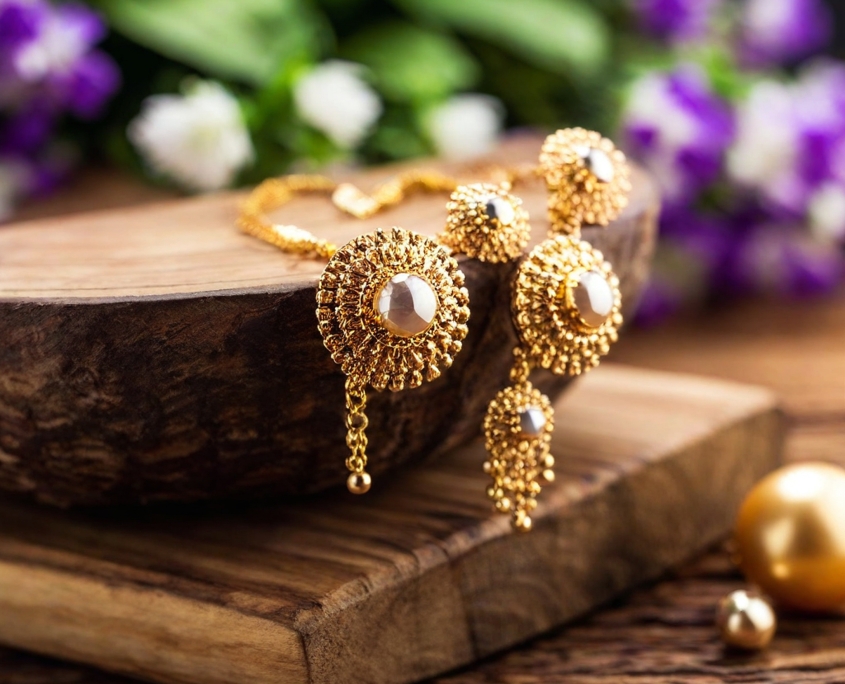
How Valuable is Taiwanese Gold?
Gold Purity in Taiwanese Gold
Purity directly impacts the value of gold, and Taiwanese gold is renowned for its high standards. Items like bullion and coins are often made of 99% pure, 24-karat gold. Meanwhile, jewelry commonly uses 22-karat gold, offering a balance between durability and purity. This makes Taiwanese gold comparable to some of the purest options, such as those from India and China.
Craftsmanship in Taiwanese Gold
Gold craftsmanship in Taiwan is a blend of precision, heritage, and creativity. Traditional designs with cultural motifs like dragons and lotus flowers dominate, symbolizing wealth and eternal luck. Meanwhile, modern trends influence contemporary designs, offering sleek and minimalist pieces for today’s wearer. This versatility allows Taiwanese gold to cater to a wide range of tastes, from classic to modern.
Taiwanese Gold vs. Other Gold
To understand the value of Taiwanese gold, let’s compare it to other globally recognized gold standards.
Taiwanese Gold vs. Indian Gold
- Purity: Both offer 24-karat gold for investment, but Indian jewelry is often crafted at 22-karat, similar to Taiwan’s approach.
- Craftsmanship: Indian gold is famed for heavy, intricate designs, ideal for large celebrations. Taiwanese gold, on the other hand, integrates cultural motifs but often keeps its designs lighter and more flexible, suitable for both traditional and modern use.
- Cultural Impact: While both hold cultural importance, Indian gold plays a more prominent role in large-scale events like weddings, whereas Taiwanese gold often symbolizes prosperity and gifting.
Taiwanese Gold vs. Chinese Gold
- Purity: Both Taiwanese and Chinese gold have high purity, typically ranging from 22-karat to 24-karat.
- Design & Craftsmanship: Traditional Chinese designs often use bold cultural symbols like dragons and phoenixes, while Taiwanese craftsmanship combines these cultural symbols with contemporary aesthetics.
- Market Overlap: Due to proximity and similar traditions, both Taiwanese gold and Chinese gold are competitively valued in the global market.
Taiwanese Gold vs. Italian Gold
- Purity: Taiwan prioritizes high-purity gold (22-24 karats) over the 18-karat gold favored in Italian gold for its durability.
- Craftsmanship: Italian gold is synonymous with minimalistic elegance and luxury. Conversely, Taiwanese gold merges cultural themes with modern trends, appealing to a broader audience.
- Value: Taiwanese gold is ideal for investment due to its high purity, while Italian gold is geared toward daily wear and fashion.
Taiwanese Gold vs. Turkish Gold
- Purity: Like Taiwan, Turkish gold emphasizes high-purity options, such as 22-karat and 24-karat pieces.
- Craftsmanship: Turkish gold features intricate filigree and ornate patterns, while Taiwanese craftsmanship balances detailed cultural artwork with contemporary simplicity.
- Market Value: Both gold types hold strong cultural and investment significance, but Taiwan’s designs often lean toward lighter, younger, and more versatile styles.

Taiwanese gold is widely known for its high purity, exceptional craftsmanship, and cultural richness.
Investment Potential of Taiwanese Gold
For investors, the value of Taiwanese gold lies in its purity and artistry. With its 24-karat bullion and culturally significant designs, it is a reliable store of wealth and an appreciating asset in times of economic uncertainty. High demand for unique, culturally rooted gold products has also bolstered Taiwanese gold’s investment potential in global markets.
Whether you’re a seasoned gold investor or exploring options for diversification, Taiwanese gold offers a mix of high intrinsic value and artistic appeal. Its craftsmanship and reliability make it a sought-after choice among collectors and investors alike.
Why Choose Taiwanese Gold?
Here’s why Taiwanese gold deserves a spot in your portfolio or jewelry collection:
- High-purity (99% gold in bullion and coins).
- A balance of cultural artistry and modern aesthetics.
- Strong market value tied to purity and craftsmanship.
- A versatile option for investment, gifting, or personal adornment.
Visit California Gold & Silver Exchange for Expert Advice
At California Gold & Silver Exchange, we specialize in helping you explore the best options for buying or selling Taiwanese gold and other precious metals. Our team of experts ensures a smooth, transparent process, whether you’re investing or liquidating.
Visit us today to unlock the true value of Taiwanese gold, learn about its gold purity, and receive top-tier guidance on the global gold investment market. Your next smart investment starts with us!

